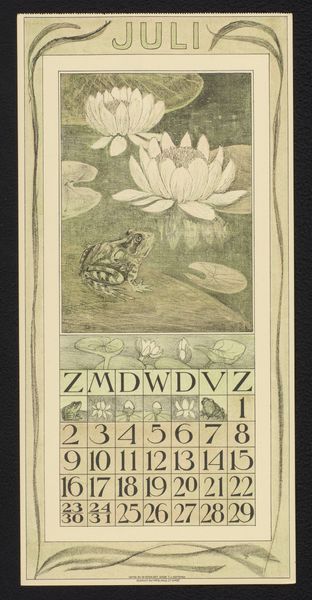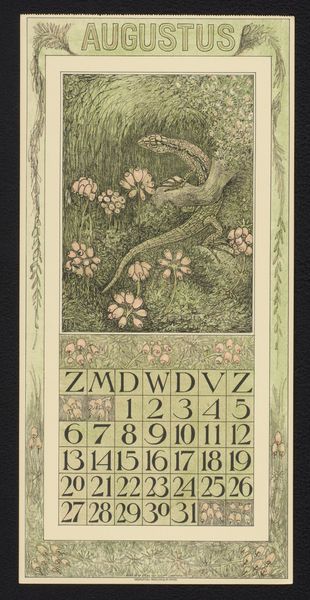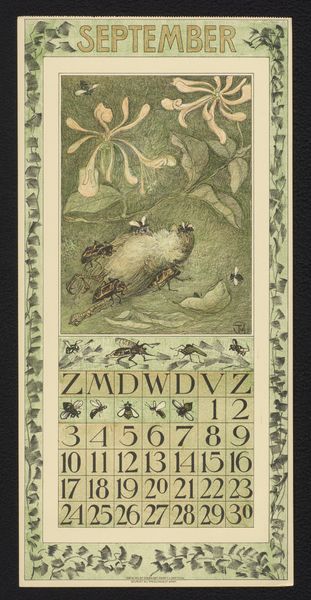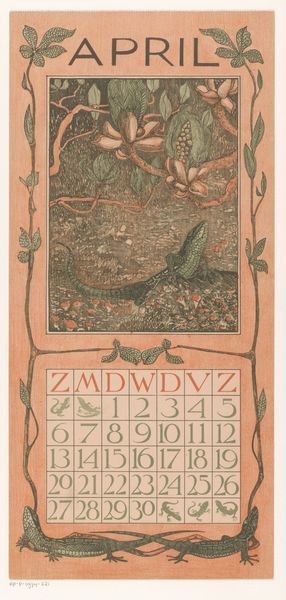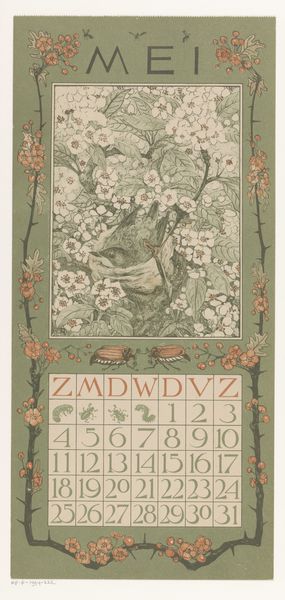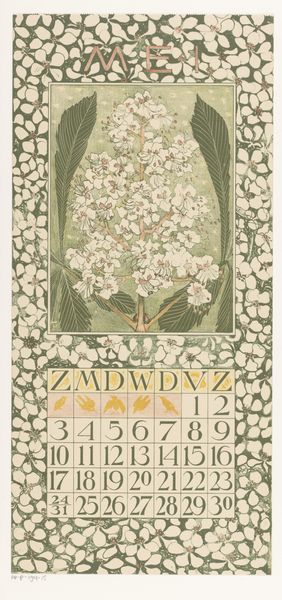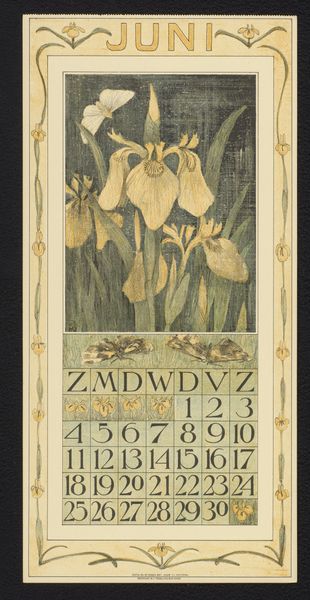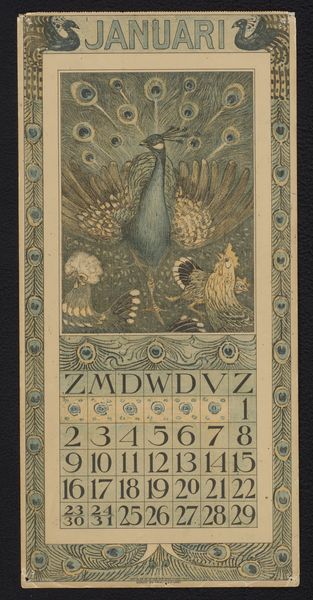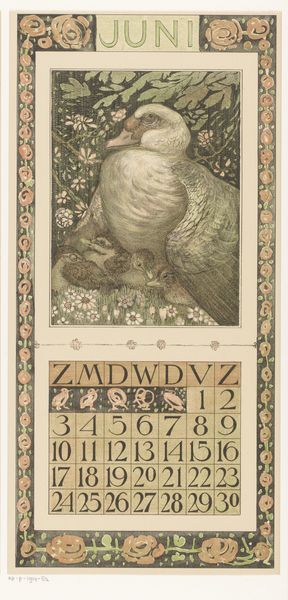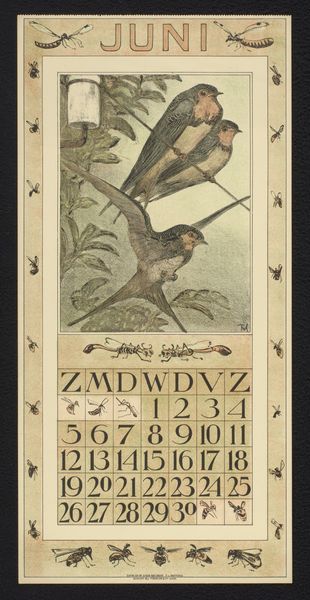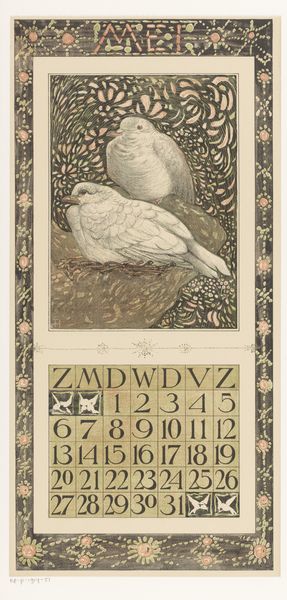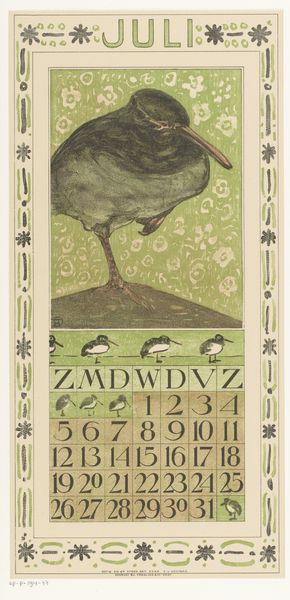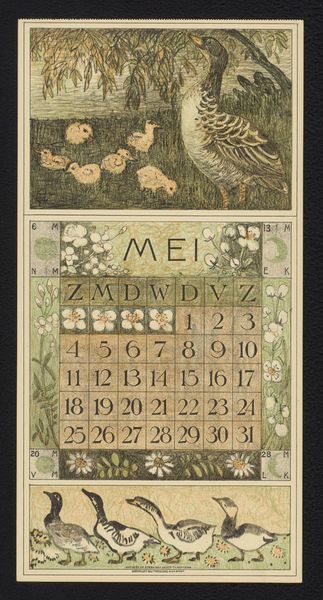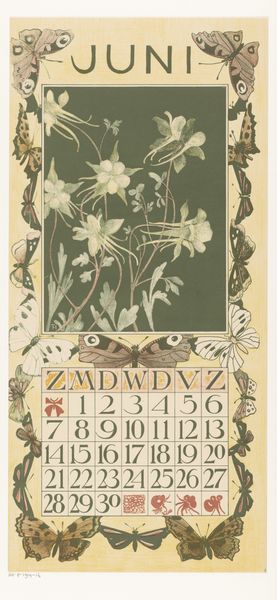
drawing, print, paper
#
drawing
#
natural stone pattern
#
naturalistic pattern
#
organic
#
art-nouveau
#
loose pattern
# print
#
landscape
#
paper
#
subtle pattern
#
organic pattern
#
repetition of pattern
#
intricate pattern
#
pattern repetition
#
layered pattern
#
combined pattern
Dimensions: height 439 mm, width 212 mm
Copyright: Rijks Museum: Open Domain
Curator: Here we have Theo van Hoytema's "Kalenderblad voor april 1911 met een pad onder bloesem," or "Calendar page for April 1911 with a toad under blossom." It was created around 1910 and is a print. Editor: It has a very quiet, pastoral feel. The color palette is gentle, and the integration of the toad with the blossom creates an unusual and appealing contrast, making me pause and consider its composition. Curator: Hoytema was deeply involved in the Dutch Art Nouveau movement, emphasizing craftsmanship and nature's patterns. The piece reflects the period's move toward organic forms and intricate design. Editor: The positioning of the toad is interesting. It's not simply an add-on, it dominates the central space. The artist elevates what society sees as perhaps ugly or inconsequential. The placement and intimate observation can challenge conventional aesthetic ideas. Curator: Absolutely, the work's date aligns with rising ecological concerns and interests in nature conservation within artistic circles. Pieces like this often promoted a heightened awareness of our interaction with natural environments. Hoytema made several such calendars. He designed and marketed them himself. Editor: This is a piece made to function in the public realm, too, not hidden in a gallery or a home. That is the power of its public role as an accessible calendar – a form of subtle activism displayed in the everyday sphere that underscores that link between nature and the cycles of daily life. How are we valuing the natural world that surrounds our calendars, and, therefore, schedules? Curator: Exactly. By placing these images of nature within the context of daily planning, Hoytema encourages viewers to think about the natural world and to be aware of it. The calendar becomes a tool that bridges art, function, and environmental awareness. Editor: Thinking about it that way, I realize that "Kalenderblad voor april 1911" is far from a passive portrayal; it's a small nudge towards ecological responsibility within an evolving industrial landscape. Curator: It's remarkable how a calendar page could represent artistic and social sensibilities in such an intricate, compelling way. Editor: A reminder to look closer at what we often overlook. Even on a calendar.
Comments
No comments
Be the first to comment and join the conversation on the ultimate creative platform.
